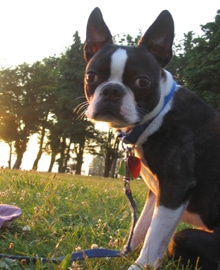 When a traditional fence is not an option, an underground fence might be a solution. But remember that although they keep your pet in, they don’t keep people or animals out! Therefore, if your dog is aggressive, or you live where he might become ‘prey’, it may not be appropriate.
When a traditional fence is not an option, an underground fence might be a solution. But remember that although they keep your pet in, they don’t keep people or animals out! Therefore, if your dog is aggressive, or you live where he might become ‘prey’, it may not be appropriate.
It’s extremely important to make sure your pet fully understands how to use the system. Weeks of training are necessary, to safely assure your dog completely comprehends the new boundary.
Most systems consist of underground wiring, and there are some that don’t involve wires. The dog wears a collar receiver which serves two purposes. First, it provides a warning tone before reaching the boundary line. If the dog continues, the collar then administers a corrective shock. It’s important to choose a system with an appropriate size and strength collar receiver for your pet. Adjustable correction levels are best, as some dogs are more sensitive than others. Always begin with the mildest setting, and increase gradually if necessary.
The system will come with many flags. They are to be set up all along the correction line as a reminder that this is the boundary. In the beginning, flags should be only about 2 feet apart. After each full week of training your dog, you’ll gradually remove a few flags, little by little reducing the reminders.
Initially, your dog should wear the collar at all times and never be in the yard off-leash. The first step is to teach your dog that the warning tone means stop. This can be accomplished by bringing him slowly toward the line and telling him ‘stay in’ just before and during the warning tone. If he continues, you’ll again remind ‘stay in’ until he receives the correction. Your pet should only need to receive the correction once or twice maximum! You’ll need to personally leash walk your dog along the perimeter at least 5 times a day for several weeks so he thoroughly understands.
It’s best to work with a professional on this. If purchasing the system through a company, find out what training is included, and make sure it will be thorough. Be sure to do the recommended practicing. Obedience will help too. Your investment of time will pay off handsomely in being able to enjoy your pet and your yard in the years to come!








Leave a Reply
You must be logged in to post a comment.